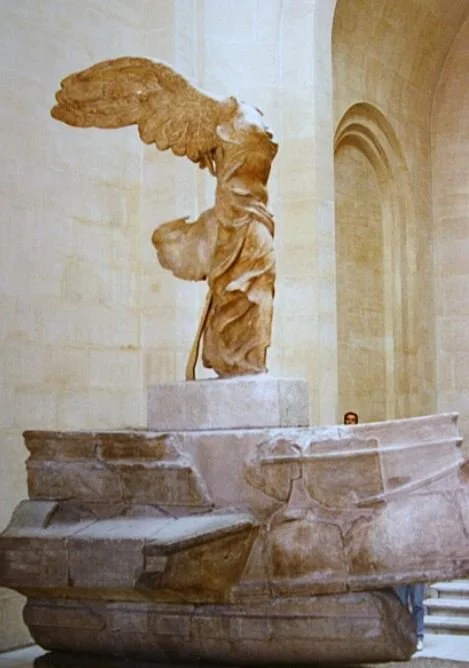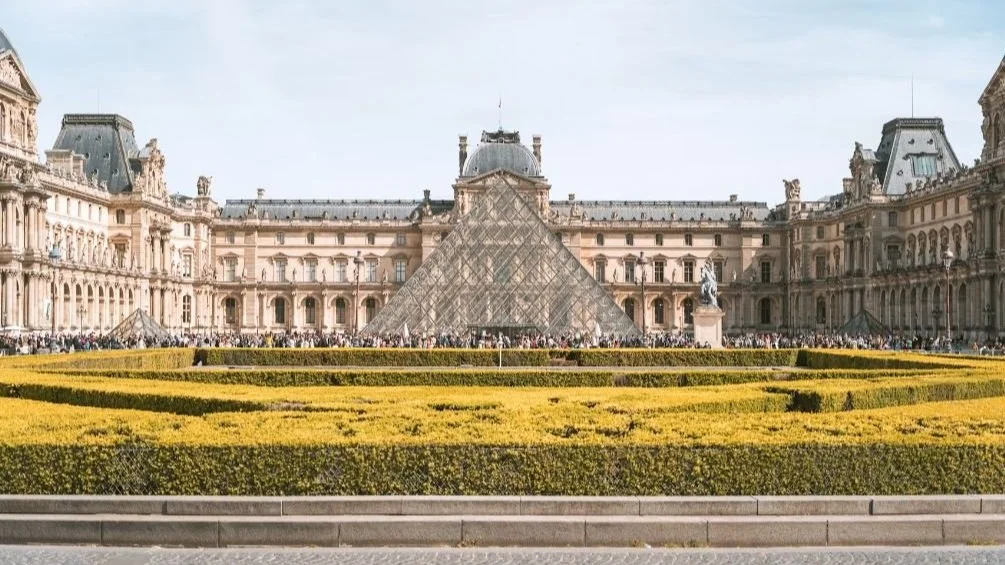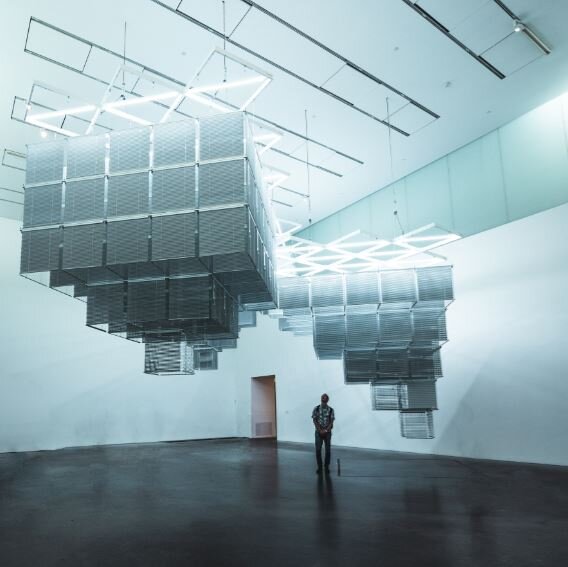What is the Largest Art Museum in the World?
Art museums have the power to transport visitors across cultures and centuries through incredible creative works. While many cities boast renowned institutions dedicated to preserving humanity’s greatest achievements in painting, sculpture, and more, one museum stands apart for its sheer enormity - the Louvre Museum in Paris, France.
This monumental complex began as a medieval fortress in the 12th century before being transformed into an opulent royal palace. It was eventually established as one of the world’s first public art museums in 1793 during the French Revolution.
Today, the Louvre’s total exhibition space covers a staggering 652,300 square feet, housing over 380,000 objects and artworks spanning the ancient world up to the 19th century. Its vast, iconic galleries attract millions annually, cementing the Louvre’s status as the largest and most visited art museum on Earth.
Read on to discover more fascinating facts about this legendary cultural institution.
Table of Contents
1. The Louvre’s Impressive Scale
3. Iconic Masterpieces at the Louvre
5. Visitor Experience at the Largest Art Museum in the World
6. Other Large Art Museums Across the World
7. Final Thoughts on Louvre, the Largest Art Museum in the World
1. The Louvre’s Impressive Scale
With a total area of 652,300 square feet of galleries, the Louvre dwarfs many other celebrated art museums around the globe, making it the Largest Art Museum in the world.
To put its immense size into perspective, it could comfortably fit around 15 football fields within its hallowed halls.
The colossal museum contains a staggering 51,600 feet of galleries, divided amongst three wings - the Sully, Richelieu, and Denon wings radiating from the landmark Pyramid entrance.
Visitors exploring the Louvre’s full breadth would have to traverse the equivalent of nearly 10 miles if the galleries were a single unbroken path.
The sheer scale and grandeur of the museum is already evident the moment visitors approach the iconic glass Pyramid entrance designed by Chinese-American architect I.M. Pei. This awe-inspiring centerpiece stretches 71 feet high and covers an area of 40,925 square feet - ample enough to host special events and functions beneath its transparent geometric planes.
Beyond its galleries, the Louvre complex encompasses the Cour Carrée and Cour Napoléon courtyard spaces, along with architectural highlights like the 19th century Richelieu Wing with its ornate exterior columns and decorative carvings.
One simply has to experience the Louvre, the world’s Largest Art Museum, in person to grasp the full extent of its colossal footprint and imposing presence amongst Paris’ landmarks.
2. The Louvre’s Collections
Within the Louvre’s labyrinth of galleries are displayed over 380,000 objects from its encyclopedic collections that span the ancient world up to 1848.
Few art museums match the breadth and depth of treasures gathered here over centuries by the kings, emperors, and heads of state who once called the Louvre their palace home.
At its core are the Louvre's unparalleled antiquities, featuring priceless works from the great ancient civilizations of Egypt, Greece, Rome, and the Near East.
The Egyptian collection alone contains over 50,000 pieces including monumental sculptures, sarcophagi, and of course the iconic Louvre Pyramid housing the Sphinx of Tanis and Seated Scribe statue.
The painting collection is similarly awe-inspiring, showcasing a survey of European artworks from the 13th to 19th centuries across 10 galleries like the breathtaking Galerie d'Apollon and Salon Carré. Here visitors can admire the Mona Lisa along with other masterpieces by Rembrandt, Raphael, Botticelli, Caravaggio, Jacques Louis David, Johannes Vermeer, Jean-Honoré Fragonard, and more.
Sculptural works spanning antiquity to the modern era are equally celebrated, such as the remarkable ancient Greek statues Venus de Milo and Winged Victory of Samothrace.
Other highlights are the French Romanesque frescoes and Gothic sculptural works concentrated in the medieval Louvre section.
The Louvre’s massive decorative arts collection encompasses treasures like the Crown Jewels of France, ornate Savonnerie carpets, and hundreds of intricately carved furniture pieces. The prints and drawings cabinet houses over 14,000 pieces including Leonardo da Vinci’s Vitruvian Man sketchbook.
These are but a small sample of the riches contained across the Louvre’s eight principal departments (Near Eastern antiquities, Egyptian antiquities, Greek/Roman antiquities, sculpture, painting, objets d'art, prints/drawings, and Islamic art) which could keep visitors enthralled for weeks on end.
3. Iconic Masterpieces at the Louvre
While the Louvre’s collections are unparalleled in their breadth, a few iconic masterpieces stand apart as global cultural touchstones. Foremost is Leonardo da Vinci’s Mona Lisa, the most celebrated painting in existence famed for her inscrutable smile and haunting expression. Though modest in size at just 2'6" by 1'9", it is protected within its own viewing room to withstand the throngs of admirers who flock there daily.
Another unforgettable sight is the Venus de Milo, an ancient Greek sculpture of the goddess Aphrodite sculpted around 100 BCE. This mysterious work missing her arms has captivated imaginations for centuries with its graceful drapery and serene expression.
The Winged Victory of Samothrace is another jaw-dropping antiquity, portraying the Greek goddess of victory descending with wind-swept robes and powerful stance. At over 18 feet tall, this Hellenistic marble sculpture is one of the most iconic works surviving from the ancient world.
From the Neoclassical period, Jacques-Louis David’s Oath of the Horatii depicting a patriotic scene from Roman history is a monumental work demonstrating the French master’s skills. Similarly moving is Eugène Delacroix's Liberty Leading the People, a dynamic allegory of the 1830 revolution that captures the romantic style.
While these are certainly the Louvre’s crown jewels, art connoisseurs could spend years studying the wealth of masterpieces by Rembrandt, Raphael, Titian, Caravaggio, Johannes Vermeer, and countless other geniuses represented here.
4. The Palace Architecture
Beyond the unmatched artwork contained within, the Louvre itself is an architectural marvel fusing elements from across centuries of French history.
Its oldest sections date back to the 12th century foundations of the fortified medieval palace on the Seine River. This was expanded through the Renaissance by King Francis I who recruited architects to create elaborate carved facades and galleries surrounding the Cour Carrée central courtyard.
Subsequent French kings like Henri IV, Louis XIII, and the Sun King Louis XIV undertook major building campaigns throughout the 17th century, extending new wings and structures like the Cour Napoléon and Grande Galerie connecting to the Tuileries Gardens.
The Louvre took on its distinct palace style in the 19th century with additions like Percier and Fontaine’s iconic Richelieu Wing colonnade and Daru staircase under Napoleon. The glass pyramid entrance designed by I.M. Pei was a daring modern intervention unveiled in 1989 sparking controversy but now an integral part of the museum experience.
No matter which era it represents, the architecture at the Louvre exudes an aura of regal grandeur and magnificence befitting of its origins as the premier Parisian palace and home of French sovereigns until the 17th century.
5. Visitor Experience at the Largest Art Museum in the World
Given the Louvre’s scale and importance, it’s no surprise it is the most visited art museum worldwide, welcoming over 10 million guests in recent years. However, those numbers inevitably mean grappling with daunting crowds, queues, and having to meticulously plan ahead to ensure a rewarding visit.
First-time guests should brace themselves for the enormity of trying to navigate the seemingly endless wings and galleries with thematic circuits like Italian Renaissance paintings, ancient Greek/Roman sculptures, Islamic art, and of course the chance to view the Mona Lisa. Guided tours and multimedia guides can help with orientation.
To beat the queues and throngs, many recommend avoiding peak season in summer and joining queues well before opening hours. Evening visitors can enjoy more peaceful contemplation of the masterpieces until the Louvre closes at 9.45pm.
Those with time should certainly spend full days, even a long weekend, exploring the collections at a manageable pace. Breaks can be enjoyed relaxing amid the sculpture-lined Cour Carrée or the magnificent Tuileries Gardens adjacent to the Louvre complex.
In every sense, the Louvre Museum truly stands apart as more than just the largest art museum in the world. Its origin as a medieval royal fortress turned opulent palace of French kings imbues it with a remarkable historical legacy few other museums can match.
6. Other Large Art Museums Across the World
Among the other largest art museums globally, a few institutions stand out:
The State Hermitage Museum (St. Petersburg, Russia)
Established in 1764, the State Hermitage Museum boasts over 233,000 square meters of total area and nearly 17,000 square meters of gallery space. Its collection includes over 3 million works of art and artifacts, including masterpieces by Leonardo da Vinci, Raphael, and Rembrandt. Housed in the former Winter Palace of the Russian tsars, the museum’s grandeur and breadth make it one of the world’s greatest repositories of art and culture.
The National Museum of China (Beijing, China)
Founded in 2003, the National Museum of China spans over 192,000 square meters of space, with 65,000 square meters dedicated to exhibitions. It houses a collection of over 1.3 million artifacts spanning China’s rich history and cultural heritage from ancient times to the modern era. The massive museum complex combines striking modern architecture with exhibits showcasing China’s pivotal role in world civilizations.
The Metropolitan Museum of Art (New York City, USA)
Established in 1870, the iconic Metropolitan Museum of Art (The Met) covers over 190,000 square meters and has over 58,000 square meters of gallery space. Its encyclopedic collection includes over 2 million works from ancient to contemporary times across all cultures and mediums. From Egyptian antiquities to American art and modern masterpieces, The Met stands as one of the premier art destinations drawing millions annually.
The Museo Nacional de Antropología (Mexico City, Mexico)
Opened in 1964, the Museo Nacional de Antropología covers over 79,000 square meters and features extensive collections showcasing the history and cultures of Mexico and other ancient civilizations. Its outstanding archaeological and ethnographic exhibits provide unparalleled insight into pre-Hispanic societies like the Maya, Aztec, Toltec and more through artifacts, sculptures, and immersive exhibits.
The British Museum (London, UK)
Founded in 1753, the British Museum spans 92,000 square meters with around 50,000 square meters of public exhibition space. Its collections encompass over 8 million objects from cultures across the ancient world, most famously the Rosetta Stone, Parthenon Marbles, and Egyptian mummies. The museum’s comprehensive survey of human history and civilization from prehistoric to modern times solidifies its place as one of the largest and most significant museums globally.
7. Final Thoughts on Louvre, the Largest Art Museum in the World
While museums like the Hermitage, Met, and British Museum certainly rival the Louvre in collection breadth and significance, its unmatched sprawling footprint of 652,300 square feet solidifies Louvre status as the indisputable largest art museum in the world.
Yet the Louvre transcends its physical size through the sheer gravitas and magnificence imbued by its centuries-old legacy as a royal palace. When you visit the Louvre, you can become immersed in an architectural and artistic wonderland.
I hope you have found my article discussing the largest art museum in the world interesting. Here are some other articles you may enjoy:
If you have visited any of these places, I would love to hear your thoughts or if you feel one of your favourites is missing from the list, please email me and let me know at [email protected].
















